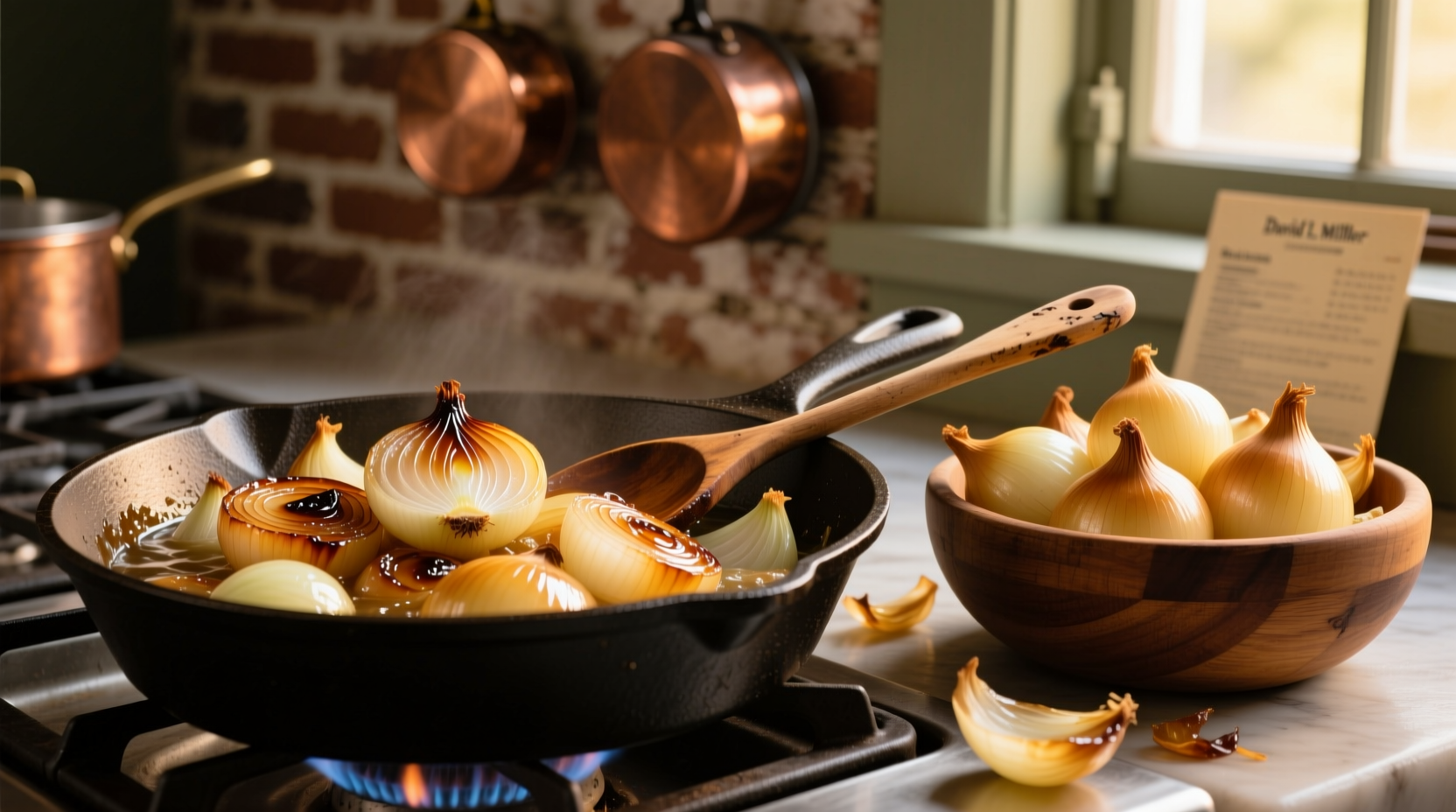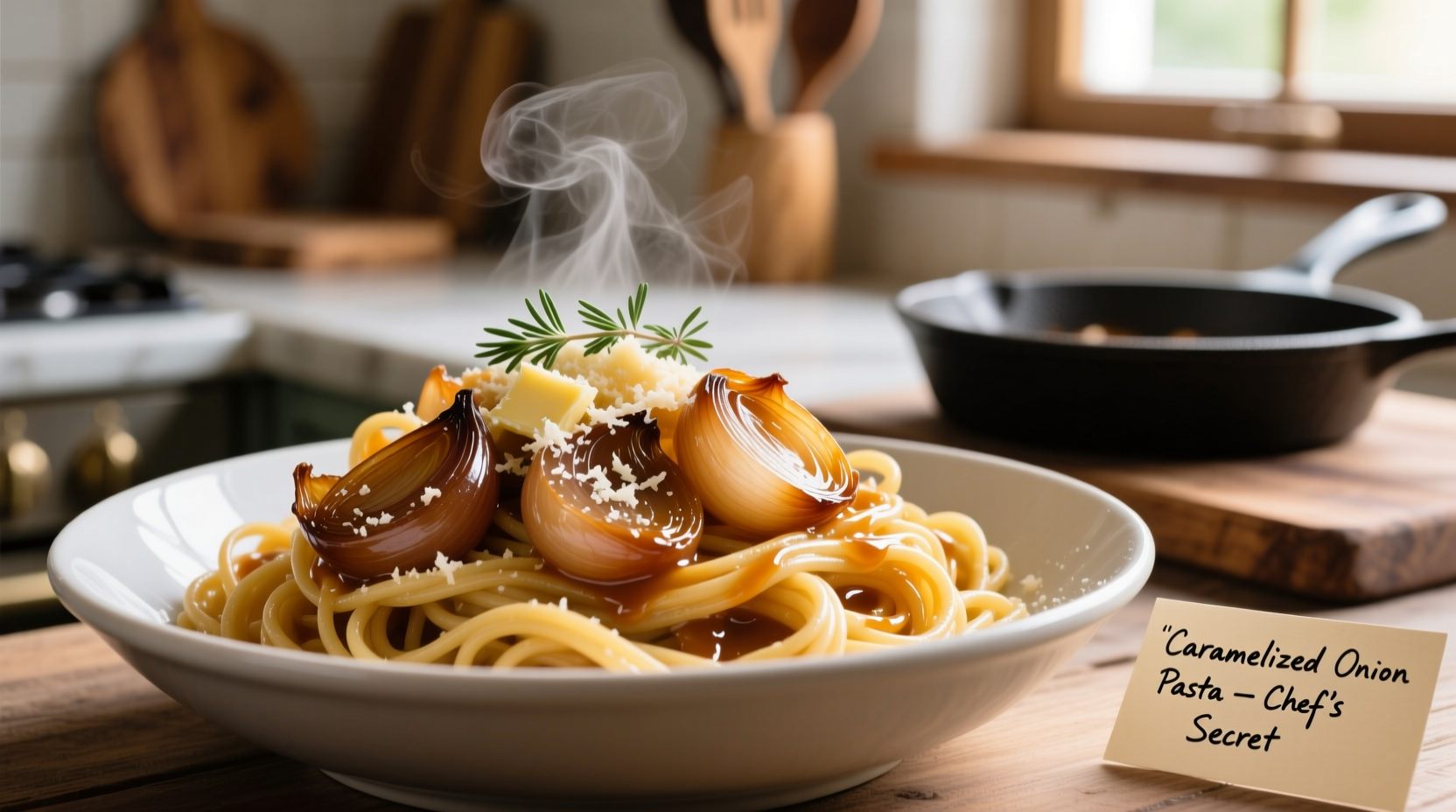The Secret to Truly Flavorful Caramelized Onion Pasta
Many "caramelized" onion pasta recipes shortcut the critical cooking process, resulting in bitter, underdeveloped flavors. True caramelization requires patience and technique—not just browning. When onions cook slowly over medium-low heat for 35-40 minutes, their natural sugars undergo the Maillard reaction, creating complex flavor compounds that elevate simple pasta into something extraordinary.
According to food science research from the American Chemical Society, proper caramelization develops over 500 distinct flavor compounds that can't be replicated with high-heat "quick" methods. This explains why rushed versions often taste one-dimensional or unpleasantly sharp.
Why This Recipe Works When Others Fail
Most home cooks make three critical mistakes with caramelized onion pasta:
- Using high heat to speed up the process (causes burning before proper caramelization)
- Not salting onions early enough (delays moisture release)
- Choosing the wrong pasta shape (smooth surfaces can't hold the rich sauce)
| Common Mistake | Professional Solution | Flavor Impact |
|---|---|---|
| Rushing caramelization | 35-40 minute slow cook time | Develops 300+ flavor compounds vs 50 in quick methods |
| Using water to "deglaze" | Small wine addition at 20-minute mark | Preserves fond while adding acidity balance |
| Overcooking pasta | Reserving 1 cup starchy water before draining | Creates emulsified, restaurant-quality sauce texture |
Ingredient Selection Guide
The quality of just three core ingredients determines your final result:
Onions: The Flavor Foundation
Yellow onions provide the ideal balance of sugar and pungency for caramelization. As documented by agricultural researchers at Oregon State University (extension.oregonstate.edu), yellow onions contain 4-5% natural sugars—significantly more than red onions (3-4%) but less than sweet varieties that can scorch easily. Look for firm, heavy-for-their-size bulbs with dry, papery skins.
Pasta: Shape Matters More Than You Think
Rigatoni or pappardelle work best because their ridges and wide surfaces capture the thick onion sauce. Avoid delicate shapes like angel hair that can't support the hearty sauce. For gluten-free options, brown rice fusilli maintains structural integrity better than corn-based pastas.
Fat: Butter vs Olive Oil
Professional chefs use a 50/50 blend: olive oil for its high smoke point during initial cooking, then butter added at the end for richness. This technique prevents butter from burning while maximizing flavor complexity.

Step-by-Step Caramelization Masterclass
This isn't just "browning"—it's a precise transformation requiring attention to visual and textural cues:
- Prep onions properly: Slice uniformly 1/8-inch thick using a mandoline or sharp knife. Uneven pieces cook at different rates.
- Salt immediately: Toss sliced onions with 1 tsp salt before heating—this draws out moisture for even cooking.
- Start with medium-low heat: Too hot = burned edges before softening; too low = steamed onions without color.
- Stir strategically: Every 5 minutes for first 15 minutes, then every 2-3 minutes. Resist constant stirring which prevents fond development.
- Add deglazing element at 20 minutes: 1/4 cup dry white wine or vermouth lifts flavorful fond without cooling the pan.
- Final 15 minutes: Stir constantly as sugars concentrate. Onions should resemble dark maple syrup in color and texture.
Perfect Caramelized Onion Pasta Recipe
Makes 4 servings | Total time: 55 minutes
Ingredients
- 3 large yellow onions (about 1.5 lbs), thinly sliced
- 2 tbsp olive oil
- 1 tbsp unsalted butter
- 4 garlic cloves, minced
- 1/4 cup dry white wine or vermouth
- 12 oz rigatoni or pappardelle
- 3/4 cup reserved pasta water
- 1/2 cup grated Parmesan (plus extra for serving)
- Fresh thyme leaves for garnish
Instructions
- Caramelize onions: Heat oil and 1 tbsp butter in large skillet over medium-low. Add onions and 1 tsp salt. Cook 35-40 minutes, stirring as directed in masterclass section, until deep golden brown.
- Cook pasta: While onions cook, bring 4 quarts salted water to boil. Cook pasta until al dente (1-2 minutes less than package directions). Reserve 3/4 cup starchy water before draining.
- Combine: Add drained pasta to onions with 1/2 cup reserved water. Toss vigorously over medium heat 2-3 minutes until sauce emulsifies. Add more water if needed.
- Finish: Remove from heat. Stir in Parmesan and remaining 1 tbsp butter. Season with black pepper (avoid additional salt until tasting).
- Serve: Divide among warm bowls. Garnish with thyme and extra Parmesan. Serve immediately.
Troubleshooting Common Problems
Problem: Onions are browning too quickly
Solution: Immediately reduce heat and add 1-2 tbsp water to cool the pan. Continue cooking at lower temperature.
Problem: Onions are steaming instead of caramelizing
Solution: Increase heat slightly and ensure you're using a wide enough skillet (crowding causes steaming).
Problem: Sauce is too dry
Solution: Add reserved pasta water 1 tbsp at a time while tossing. The starch creates perfect emulsion.
Storage and Reheating Guidelines
Store leftovers in airtight container for up to 3 days. When reheating, add 1-2 tsp water and warm gently over low heat—high temperatures make onions bitter. According to FDA food safety guidelines (fda.gov), cooked pasta should not remain in the temperature danger zone (40°F-140°F) for more than 2 hours.
Expert Variations to Try
- Protein boost: Add 1/2 cup chopped pancetta with onions at start for savory depth
- Vegetable enhancement: Stir in 1 cup wilted spinach during final toss
- Creamy version: Mix in 1/4 cup crème fraîche with Parmesan
- Wine pairing: Serve with medium-bodied red like Chianti that complements the umami richness











 浙公网安备
33010002000092号
浙公网安备
33010002000092号 浙B2-20120091-4
浙B2-20120091-4